As kids, we made it a habit to get up early, grab some cereal and tune into our favorite Saturday morning cartoons. Every week, we were enthralled by shows like The Smurfs, Scooby-Doo, Muppet Babies and dozens of others both legendary and now-forgotten. We also begged our parents to get their hands on every product that was even remotely associated with those toons: dolls, coloring books, board games, etc.
In seeing those cartoons from our as-yet undeveloped outlooks on life, we were all focused on the weekly adventures of our beloved furry and human friends as they fought evil of all kinds. Now as we mature, we look back at those adventures with sentimentality while we also think about how those supposedly innocent kidvid favorites got on TV, and more deeply, how the artistic intentions of their creators clashed with the opportunistic networks and merchandisers who saw Saturday morning TV as a profit center.
In the surreal animated/live-action “found footage” series The West Patch, that battle plays out not in the privacy of corporate boardrooms, but in the broadcasts of an otherwise charming ‘90s-era kids’ cartoon (also the title of this series) based on the stories of a beloved children’s writer whose passing, and the secrets he left behind, threaten to shatter the consistently cheerful tone established by the show’s overzealous producers who assume total control over the cartoon and its heartwarming but often mischievous characters.

L-R: Orpho (voiced by Roger Hanna) and Pumpkin Kid (voiced by Ghastly Dipper) in the first episode of THE WEST PATCH.
The West Patch is set in the prototypical fantasy world of a charming village. Its inhabitants include loving but inept patriarch Your Dad and his more orderly yet frequently scheming counterpart Mommy Zelle (voiced by John Mondelli and Clare Loughran, respectively), the headstrong and brash Leveret (Anna Beck), the persuasive and self-centered Gale Ponytail (Shishishiena), the delusional Orpho (Roger Hanna), whose bravado immediately disappears when challenged, plus resident troublemaker Pumpkin Kid (Ghastly Dipper) and the otherwise ridiculed but resilient Pogey No-Leg (Bruce Hennigar).
Created and animated by twins Rachel and Hannah Mangan, the 10 episode first season of The West Patch is presented in a captivating and often chilling mix of colorful animation and live-action sequences. Cementing its painstakingly conceived “found footage” aesthetic by having its visuals blemished with the typical wear and tear of an old VHS tape recorded from TV, and with the cartoons co-existing alongside glimpses of commercial tie-ins and show promos, those elements prompt viewers to ponder The West Patch’s biggest question: can art and commerce co-exist, or is the latter doomed to overtake the former?
By creating The West Patch, the Mangans considered that aforementioned dilemma while pondering how an otherwise happy cartoon could suddenly turn into a terrifying experience. While their love of Japanese anime, “slow burn” type storytelling and mature toons like Adult Swim’s The Venture Bros. influenced the Mangans’ creative approach to making this series, they also explain that their spot-on observations of specific styles of animation and the possibilities of centering storylines around otherwise secondary characters were some of the other keys to their project’s realization.
Chris Hadley: What (and/or who) inspired you to make the show?
Rachel and Hannah Mangan (creators, The West Patch): Our initial inspiration came from watching the first episode of the ‘90s cartoon Moomin Valley, where their main character messes with a magical hat and gets turned into a troll. His friends and family don’t recognize him, and the tone of the scene is very intense and tragic. In the end his mother says she knows it’s her son, and the spell wears off. They’re back to playing together like nothing happened the next day.
We immediately asked ourselves ‘what if he didn’t turn back?’, and the idea of something terrible happening in one of these quaint, happy ‘90s shows full of dangerous magic was born. Since then, we’ve looked at other media we grew up admiring, like Lemony Snicket’s A Series of Unfortunate Events, and grew the concept from there.
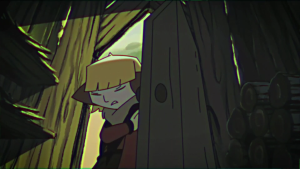
Pogey No Leg (voiced by Bruce Hennigar) in episode 1 of THE WEST PATCH.
CH: Who/what are some of your biggest creative influences, and how (if at all) did you channel those into the work you did on The West Patch while also developing your own unique voice as storytellers on this series?
The Mangans: We’ve always watched cartoons with an obsessive eye, looking at how different shots were done or what frame rate anime can get away with, so creative influence has been an ongoing and homogeneous thing. We also love casually dark stories, like Agatha Christie’s works where a little old lady (Miss Marple) solves murders over tea. That drew us to the slow burn, dark sort of stories it tells.
We’re also obsessed with side characters and their potential, always wishing there were a story about the main villain’s henchmen or loving when a superhero show focuses on the sidekicks for a while. Shows like The Venture Bros. are a dream in that regard, so it makes sense that we’d make a show with a ‘main character’ who gets pushed to the side as a background kid grows more interesting.
CH: The show is a surreal, edgy adult take on Saturday morning cartoons that employs a “found footage” aesthetic in its overall look (using animation and live action, as if this was an old VHS tape from the ’90s). What inspired you to produce each episode using those approaches for the show’s storytelling and visuals, and in what ways do they emphasize/illustrate the overall themes examined throughout the series (including the ongoing struggles of creators whose artistic aims constantly clash with commercial considerations)?
The Mangans: The visuals were largely chosen because we wanted an aesthetic way to excuse a low-budget style. Old cartoons are old frame rate, so we could make it faster between the two of us. Creating a doable length and style was very important in our planning phase since we knew our limited resources wouldn’t change anytime soon.
It also came from inspiration. Moomin Valley was an authentic old cartoon, and The Venture Bros. copied an old Jonny Quest style (of animation) too. It’s a nostalgic aesthetic, and we love that. It also gives us a ton of visuals we can cheaply utilize to make a strong style people also recognize right away and find endearing. This comes into play with the themes well because you always hear old stories of the evil producer screwing over the innocent creator.
There’s a great documentary on how Moomin’s creator went through hard patches, too, and it’s reflected a lot in today’s struggle where even though it’s more accessible than ever to get tools and broadcast your own work, the industry is still this giant bubble that feels impossible to get into. That kind of timeless relation was easy to capture by ‘discovering’ an old show with this tragic backstory, and it’s been a ton of fun having fans pretend they watched it as a kid and making up favorite quotes and stories.

A look at the animation process for THE WEST PATCH, with the drawing and motion development of Orpho in its early stages.
CH: What was the production process like for your show (in terms of its animation, voice recording and filming of live action sequences), and what were some of the biggest thrills/challenges you experienced as you worked to merge all those elements together in each episode?
The Mangans: We got all ten episodes written first, since we knew we wanted a self-enclosed story, and had all ten episodes recorded after that so we wouldn’t have to hit people up for years getting more lines. After that, we made the theme song, commissioning (composer) Matt Davies on Fiverr (a website where freelance creators offer their services) for our fantastic custom song, and then (we) started storyboarding and doing animation alongside background art.
Live action scenes came as friends were available – there was plenty of time to schedule it in since animation takes so long – and (the) music score and sound were added in the last month so they could have as much finished animation as possible to work with. Our favorite part in all of that had to be directing the voice actors. They were all awesome, extremely talented people, so we could get ridiculously picky with their deliveries and they could knock it out of the park every time.
The biggest challenge was definitely (finding) the self-discipline to sit down and do all that art. A couple seconds of animation can take hours of collaborative work, but really, merging everything is the fun part, since everyone is so professional and talented that they know exactly what we want somehow, so it all pieces together with just a couple revisions in the end. We’re very lucky and blessed.
CH: What makes your show similar to/unique from others like it?
The Mangans: There are web shows like Don’t Hug Me I’m Scared that have the abstract hidden story going on, much more so than ours I’d say, and shows like Over the Garden Wall that marry kids cartoons with darker, creepier stuff. Ours stands apart because of the transmedia (element) and (the cartoon) pretending to be something real and old, Blair Witch style.
We’ve had tremendous fun writing the book, creating the author and producer characters, and other ‘rediscovered’ media that’s a part of this giant web of the story outside of the show itself. I don’t think many other shows want to invest the time or trust their audience to be that explorative, but I hope more are.
Alternate reality games and web (series) have had so much success with their audiences, like with Petscop and Marble Hornets, it’s a wonder more people don’t do it. We’re not even that intense with ours, but it still gets a lot of engagement from our fans and is incredibly fun to orchestrate.

Leveret (voiced by Anna Beck), Orpho (Roger Hanna) and Pumpkin Kid (Ghastly Dipper) enter a room filled with magical yet dangerous artifacts in episode 2 of THE WEST PATCH.
CH: In terms of audiences, who do you think would like to watch your series?
The Mangans: Anyone who loves Gravity Falls, or wishes their favorite old shows weren’t just for kids, or who likes long form stories rather than episodic should check out our show. I think we appeal to the dark and quirky, and reward the patient, and offer nostalgia in a creepy, uncanny way that mainstream networks don’t want to risk.
CH: What have you taken away from the experience of making this show?
The Mangans: Our main surprise was how easy it can be to make something look high production value, which has raised our bar and potential for future projects. A couple of people with too much spare time can make something wonderful, and we plan to do that for the foreseeable future beyond The West Patch in everything we make.
CH: What do you want viewers to take away from watching your show?
The Mangans: If people walk away valuing the dark times in their lives as opportunities to grow, we did our job. If they walk away valuing the stories they wish they could tell but feel like mainstream productions don’t care about, then we did our job very well.
NOTE: All 10 episodes of The West Patch are closed-captioned.
Watch The West Patch, plus behind-the-scenes videos on the making of the series, on YouTube:
https://www.youtube.com/channel/UCU0mysY1u-Vdy9Rz1rmuhdA
Visit The West Patch’s official web site:

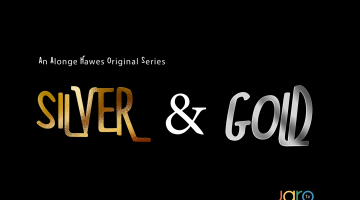
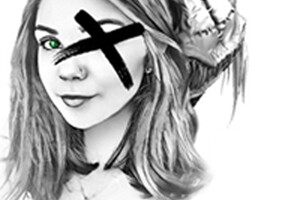
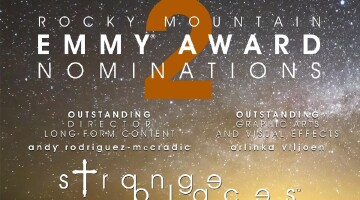
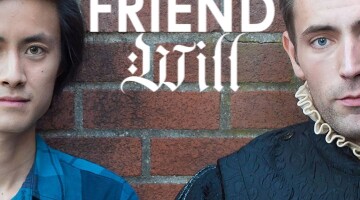
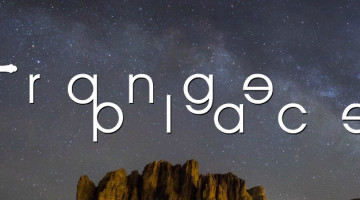
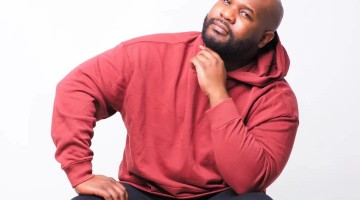
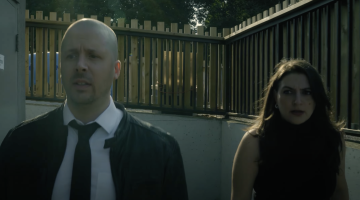
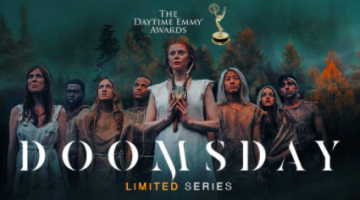

No Comment